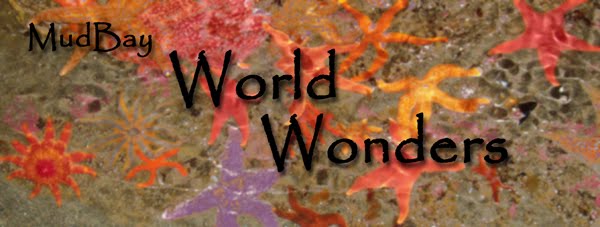Have you ever thought about what it would be like to miniaturize yourself and climb right into the middle of (or even live inside of) a geode? I used to daydream about such things as a child, while holding one of these fascinating, crystal-laden rocks in my hands. Sometimes, dreams do come true:
Ten years ago while excavating a tunnel, two miners discovered a giant crystal cave more than 1,000 feet below the town of Naica, Mexico. The cave contains translucent selenite gypsum crystal beams measuring up to 36 feet long and weighing up to 55 tons. The crystals thrived because they were submerged in mineral-rich water with a very narrow, stable temperature range of approximately 136 degrees Farenheit.
Volcanic activity that began about 26 million years ago created Naica mountain and filled it with high-temperature anhydrite, which is the anhydrous—lacking water—form of gypsum. Anhydrite is stable above 136 degrees Fahrenheit. Below that temperature, gypsum is the stable form.
When magma underneath the mountain cooled and the temperature dropped below 58 degrees Celsius, the anhydrite began to dissolve. The anhydrite slowly enriched the waters with sulfate and calcium molecules, which for millions of years have been deposited in the caves in the form of huge selenite gypsum crystals. For the Cave of Crystals to have grown such gigantic crystals, it must have been kept just below the anhydrite-gypsum transition temperature for many hundreds of thousands of years.
Interesting Facts:
- The giant crystals found in the caves at Naica are softer than a human fingernail.
- The largest crystal found at Naica is 500,000 years old.
- The stunning crystal pillars are made from the same common mineral as drywall – it's called gypsum.
- The Naica cave's deadly heat comes from the depths of the Earth. Naica sits on a set of fault lines. A magma chamber a mile and a half down warms the water that flows throughout the mountain.
- The Naica principle cave "Cueva de Los Cristales" is 113 degrees Farenheit and 100% humidity.
For more information about the efforts being made to study and preserve this incredible natural wonder, visit National Geographic's website. (For video clip, click here.)











I am gobsmacked, speechless and totally in awe of this incredible natural wonder. What an amazing place!
ReplyDeleteFabulous idea for a new blog, btw, keep the posts coming, please.
Absolutely breathtaking ... I have been a "rockhound" from a wee young age. Digging for crystals was a weekend family outing. However, we never found treasures such as these!
ReplyDeleteTruly Magnificent!!!
I am a biology instructor and love to get new ideas for interesting facts and images for students. Your website provides this - and your choices are wonderful.
ReplyDelete